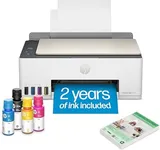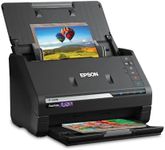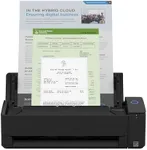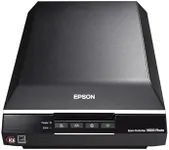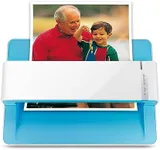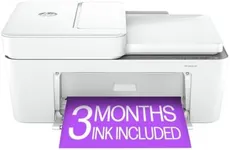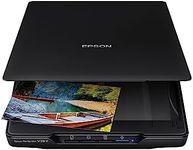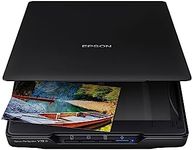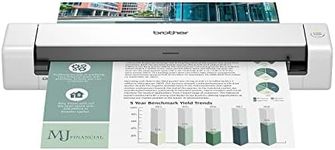Buying Guide for the Best Photos Scanners
When choosing a photo scanner, it's important to consider your specific needs and how you plan to use the scanner. Whether you're digitizing old family photos, scanning professional prints, or archiving documents, the right scanner can make a big difference in the quality and efficiency of your work. Here are some key specifications to consider when selecting a photo scanner.ResolutionResolution is measured in dots per inch (DPI) and indicates the level of detail the scanner can capture. Higher DPI means more detail and better quality scans. For general photo scanning, a resolution of 300-600 DPI is usually sufficient. For professional or archival purposes, you might want a scanner with 1200 DPI or higher. Consider what you will be using the scans for: if you need high-quality prints or detailed enlargements, opt for a higher DPI.
Color DepthColor depth, measured in bits, determines how many colors the scanner can capture. Higher color depth means more accurate and vibrant colors. Most photo scanners offer 24-bit color depth, which is adequate for most uses. For professional or high-quality photo scanning, look for scanners with 48-bit color depth. If you need true-to-life color reproduction, especially for professional work, a higher color depth is essential.
Scan SpeedScan speed is how quickly the scanner can process an image, usually measured in seconds per page. Faster scan speeds can save time, especially if you have a large number of photos to scan. For occasional use, scan speed may not be as critical, but for large projects or professional use, a faster scanner can be very beneficial. Consider how much scanning you will be doing and how important speed is to your workflow.
ConnectivityConnectivity options include USB, Wi-Fi, and sometimes Bluetooth. USB is the most common and reliable, but Wi-Fi can offer more flexibility, allowing you to scan directly to your computer or cloud storage without cables. If you plan to use the scanner with multiple devices or need the convenience of wireless scanning, look for models with Wi-Fi connectivity. Think about your setup and how you prefer to transfer your scanned images.
SoftwareThe software that comes with the scanner can greatly affect your experience. Good software can make it easier to edit, organize, and share your scans. Look for scanners that come with user-friendly software that meets your needs, whether it's basic editing tools or advanced features like OCR (optical character recognition) for text documents. Consider what kind of post-scan processing you will need and choose a scanner with software that supports those tasks.
Size and PortabilityThe size and portability of the scanner can be important depending on your workspace and how you plan to use it. Flatbed scanners are larger but can handle a variety of media, while portable scanners are smaller and easier to store but may have limitations. If you need to scan large or thick items, a flatbed scanner is a better choice. For on-the-go scanning or limited space, a portable scanner might be more suitable. Think about where and how you will be using the scanner.
Media HandlingDifferent scanners can handle different types of media, such as photos, slides, negatives, and documents. Some scanners come with special attachments or features for scanning film or slides. If you need to scan a variety of media types, look for a versatile scanner that can handle all your needs. Consider the types of items you will be scanning and choose a scanner that can accommodate them.
